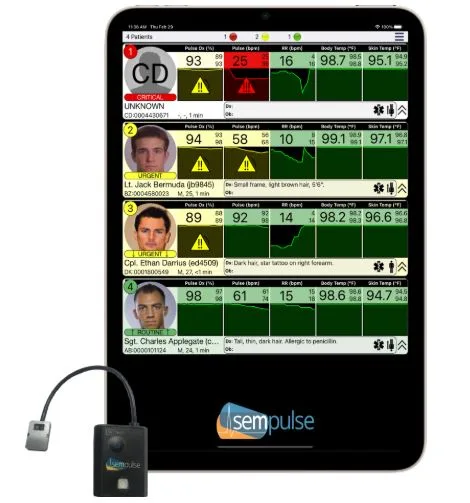How Non Invasive Health Monitoring Enhances Patient Care
Non-invasive health monitoring is revolutionizing patient care by offering safer and more comfortable methods to keep track of health status without invasive procedures. This article explores the world of non-invasive patient monitoring, including the types of monitoring available, their benefits, and future trends shaping the healthcare industry.
Understanding Non Invasive Health Monitoring
To grasp the significance of non-invasive health monitoring, it’s essential to understand its key aspects:
- Definition: Non-invasive health monitoring refers to methods that monitor health signs without penetrating the skin or inserting devices inside the body. This modern approach contrasts with traditional invasive procedures.
- Technology and Mechanisms: Various innovative technologies, such as wearable devices and sensors, enable non-invasive monitoring of vital signs like heart rate, blood pressure, and temperature. These devices function by detecting changes in electrical activity or using optical methods to assess bodily functions.
Non-invasive monitoring not only enhances patient comfort but also reduces infection risks associated with invasive methods. You can learn more in this journal article. The following sections delve into specific examples of non-invasive monitoring and their applications in improving patient care.
The Role of SEM Monitoring in Patient Care
Surface Electromyography (SEM) is a valuable tool in non-invasive health monitoring. It detects muscle activity using sensors, providing essential data without breaking the skin. This technology is particularly useful in:
- Rehabilitation: Helps in tracking muscle recovery and adjusting physiotherapy treatments.
- Sports Science: Offers athletes insights into muscle performance, aiding in training optimization.
- Clinical Diagnosis: Assists in diagnosing muscle disorders through detailed muscle activity analysis.
Patient Vital Signs Monitoring
Non-invasive technologies play a crucial role in tracking patient vital signs, offering a convenient and comfortable approach to monitoring essential health indicators like heart rate, blood pressure, and temperature.
Non-Invasive Methods for Vital Signs
- Heart Rate Monitors: Devices like wristbands and chest straps provide real-time monitoring of heart rhythms.
- Blood Pressure Monitors: These devices offer accurate readings without invasive techniques.
- Temperature Monitors: Non-invasive thermometers deliver quick and precise temperature readings.
Combining vital signs monitoring functions into a single device streamlines patient care, making continuous monitoring feasible without discomfort. To explore more, check out Sempulse.
Adopting these advanced technologies improves the precision and efficiency of patient care, ensuring better health outcomes with minimal disruption to daily life.
Real-Time Monitoring: Enhancements and Innovations
Real-time vital signs monitoring is crucial for timely medical interventions, and recent technological advancements have made tracking patient health more efficient and insightful.
- Quick Data Access: New software solutions enable instant access to patient data, facilitating early detection of health issues.
- Improved Accuracy: Advanced sensors provide precise readings of vital signs like heart rate and blood pressure.
- Wireless Solutions: Wireless technologies eliminate the need for bulky equipment, simplifying patient monitoring without invasive procedures.
Noteworthy advancements include wearable devices that monitor heart rate and remote monitoring systems allowing doctors to track patient health remotely.
Noninvasive Respiration Rate Monitoring
Non-invasive respiration rate monitoring is vital for assessing breathing patterns without traditional discomfort. This approach aids in early detection of respiratory issues and encourages regular monitoring with less intrusion.
Recent methodologies include the use of optical sensors and capnography, which measure carbon dioxide levels in a patient’s breath to provide insights into respiratory health.
Technologies in this domain are rapidly advancing, offering valuable data without significant intrusion.
Real-time monitoring and non-invasive respiration rate monitoring mark significant strides in healthcare technology, significantly enhancing patient care.
Benefits of Non Invasive Monitoring: Patient Outcomes and Efficiency
Non-invasive health monitoring has transformed patient care by enhancing outcomes and improving healthcare efficiency in various ways.
- Efficient Data Collection: Continuous observation without disruptions enables timely interventions for improved outcomes.
- Increased Accessibility: Easy access to vital health metrics enhances care quality.
- Data Management Solutions: Implementing efficient systems to manage extensive data helps address cost and complexity challenges, aligning with future technological trends.
Despite the benefits, challenges like high initial costs and technological limitations remain in adopting non-invasive monitoring technologies. Efficient data management systems are crucial to handle the vast amounts of generated data effectively.
Future Trends in Non Invasive Health Monitoring
The future of non-invasive health monitoring holds promising advancements that will revolutionize patient care further:
- Advanced Sensor Technology: Smaller, more accurate sensors will enhance monitoring capabilities.
- Integration with AI: Artificial intelligence aids in interpreting data for predictive healthcare and personalized treatment.
- Wearable Devices: Continued growth in wearable technologies empowers individuals to monitor their health in real time.
- Cloud-Based Monitoring: Real-time data transmission to cloud platforms promises seamless integration for healthcare providers globally.
- Telemedicine Integration: Combining non-invasive monitoring with telehealth services expands medical care access irrespective of geographical location.
As technology advances, non-invasive health monitoring is set to transform healthcare significantly.



